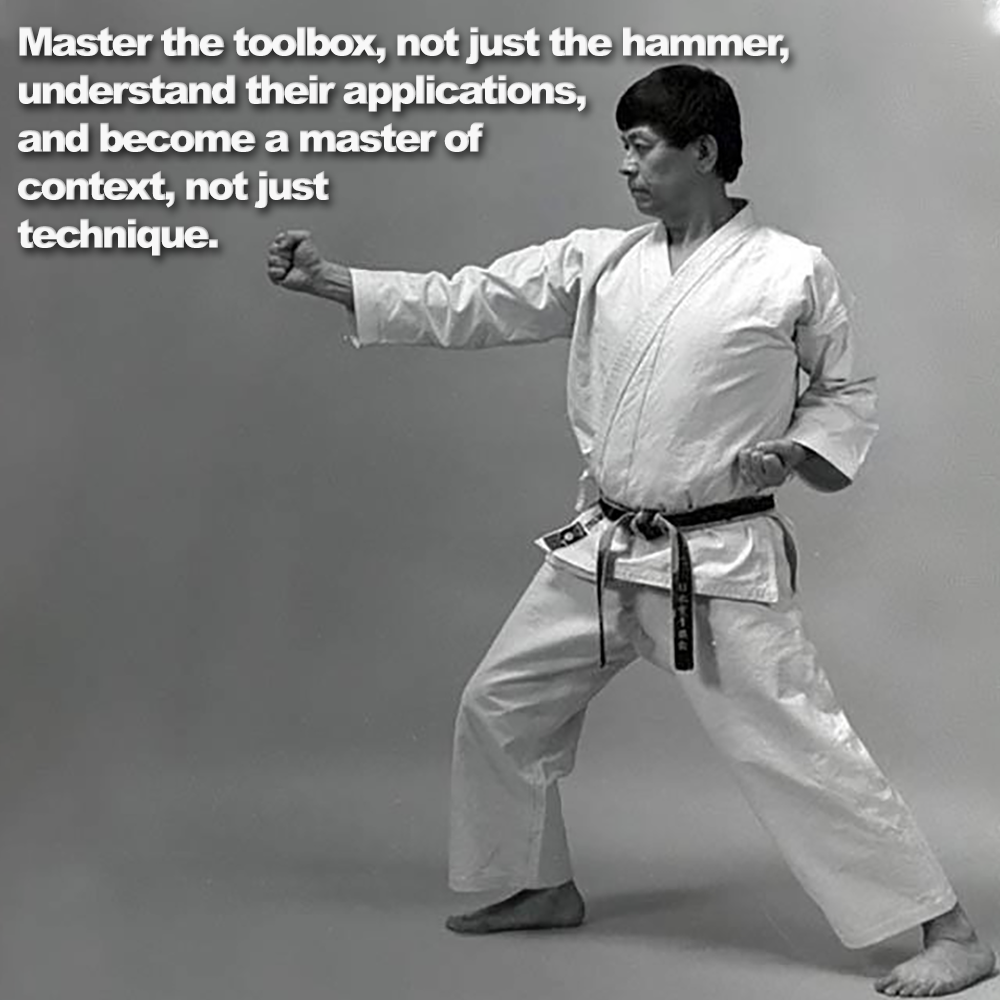
Master the toolbox, not just the hammer, understand their applications, and become a master of context, not just technique.
Posted by ADAM CARTER on MAR 25, 2024

Master the toolbox, not just the hammer, understand their applications, and become a master of context, not just technique.
(1 minute 40 second read)
Imagine a toolbox filled with tools; wrenches, hammers, screwdrivers, these tools can fix many things….. but how you use them depends on the job.
The martial arts are like those tools – different methods have different goals.
Karate, Judo, Jiu-jitsu, MMA, Boxing – these are all different fighting methods, but each grabbing tools from the same box.
Why? Because the human body works the same way.
But while techniques might look similar, their purposes differ greatly.
Using techniques in competition you seek victory, sparring involves mutual engagement, and self-defense prioritizes swift escape. These varying goals lead to distinct tactics.
However, even though the tools might look similar – a punch here, a grab there – what they’re trying to achieve can be totally different.
For instance, throws in self-defense aim to get you upright quickly, creating distance and a chance to escape.
On the other hand, grappling in sport ending in throws, are often used to gain dominant control on the ground. In a MMA competition, taking down your opponent and securing a mount position (straddling them with control) is a strategic move to limit an opponents mobility, open up submission opportunities or ‘ground and pound’.
Imagine trying to fend off an attacker in a crowded hallway. Taking them down to the ground might put you in a disadvantageous position, trapped and vulnerable to further attacks.
This highlights a crucial concept: a simple movement that you know well, in the wrong context, can put you in serious difficulty.
Mastering the martial arts, and it doesn’t matter which martial art, involves not just the principles and techniques themselves, but also understanding when and how to apply them effectively in different situations.
There’s no universally ‘best’ method; the opinions of keyboard warriors who lack practical training are inconsequential; a joint lock effective in Jiu-Jitsu, or a throw from Judo, or the sprawl in MMA, might not be ideal in all scenarios. Remember, human anatomy is universal, but the key difference lies in the emphasis each method places on the technique to achieve its specific goals.
For those who advocate for the absolute superiority of a single method (“xyz” method is best), a better approach is understanding how to choose the right tool for the job. And while similar tools might exist across different methods, it’s the understanding of their application in context that truly matters.
![]() Photo Credit: Teruyuki Okazaki
Photo Credit: Teruyuki Okazaki
